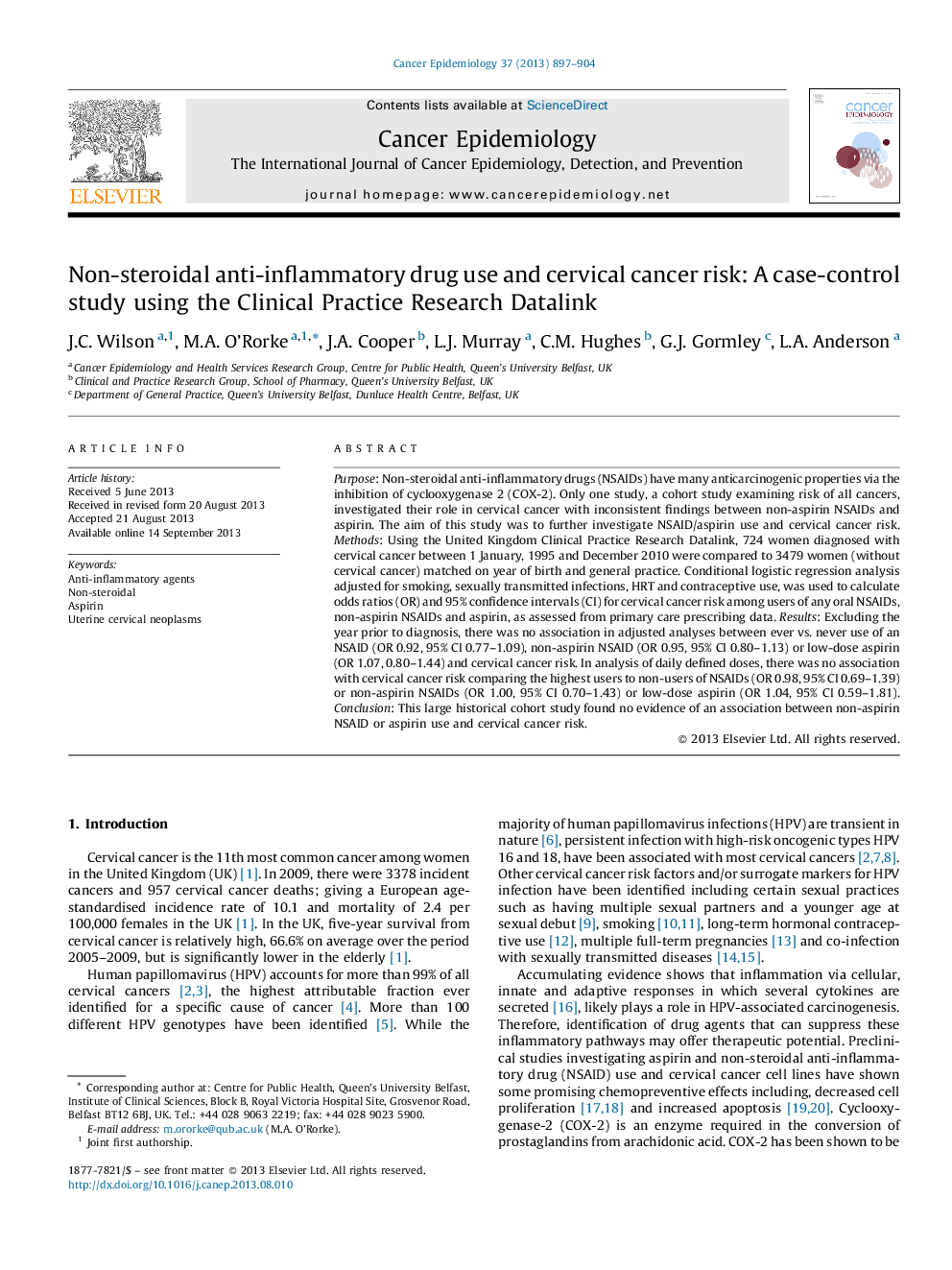| کد مقاله | کد نشریه | سال انتشار | مقاله انگلیسی | نسخه تمام متن |
|---|---|---|---|---|
| 2108854 | 1083843 | 2013 | 8 صفحه PDF | دانلود رایگان |

Purpose: Non-steroidal anti-inflammatory drugs (NSAIDs) have many anticarcinogenic properties via the inhibition of cyclooxygenase 2 (COX-2). Only one study, a cohort study examining risk of all cancers, investigated their role in cervical cancer with inconsistent findings between non-aspirin NSAIDs and aspirin. The aim of this study was to further investigate NSAID/aspirin use and cervical cancer risk. Methods: Using the United Kingdom Clinical Practice Research Datalink, 724 women diagnosed with cervical cancer between 1 January, 1995 and December 2010 were compared to 3479 women (without cervical cancer) matched on year of birth and general practice. Conditional logistic regression analysis adjusted for smoking, sexually transmitted infections, HRT and contraceptive use, was used to calculate odds ratios (OR) and 95% confidence intervals (CI) for cervical cancer risk among users of any oral NSAIDs, non-aspirin NSAIDs and aspirin, as assessed from primary care prescribing data. Results: Excluding the year prior to diagnosis, there was no association in adjusted analyses between ever vs. never use of an NSAID (OR 0.92, 95% CI 0.77–1.09), non-aspirin NSAID (OR 0.95, 95% CI 0.80–1.13) or low-dose aspirin (OR 1.07, 0.80–1.44) and cervical cancer risk. In analysis of daily defined doses, there was no association with cervical cancer risk comparing the highest users to non-users of NSAIDs (OR 0.98, 95% CI 0.69–1.39) or non-aspirin NSAIDs (OR 1.00, 95% CI 0.70–1.43) or low-dose aspirin (OR 1.04, 95% CI 0.59–1.81). Conclusion: This large historical cohort study found no evidence of an association between non-aspirin NSAID or aspirin use and cervical cancer risk.
Journal: Cancer Epidemiology - Volume 37, Issue 6, December 2013, Pages 897–904